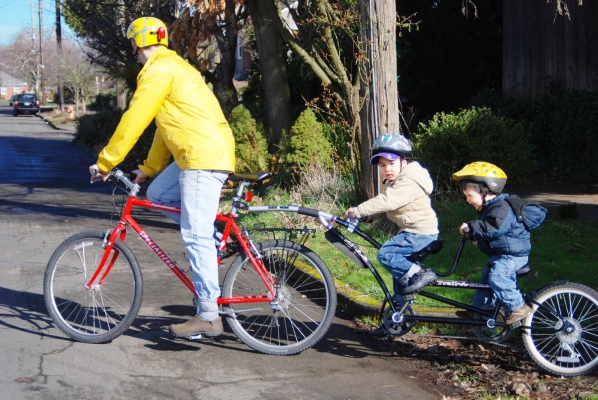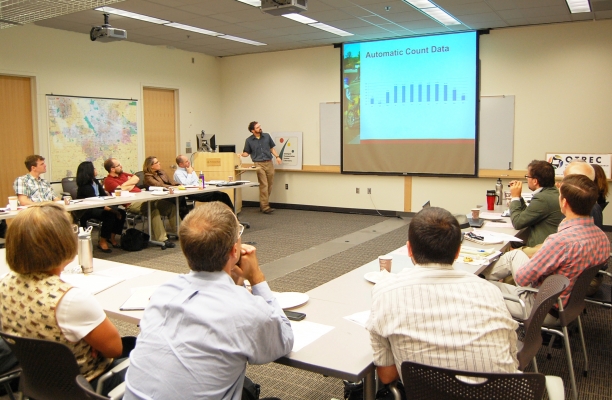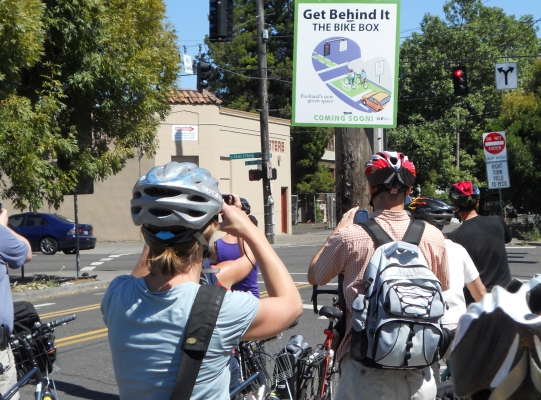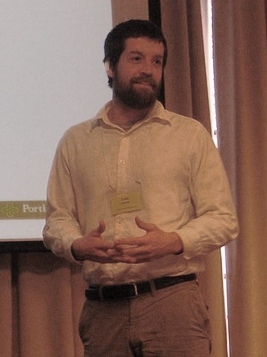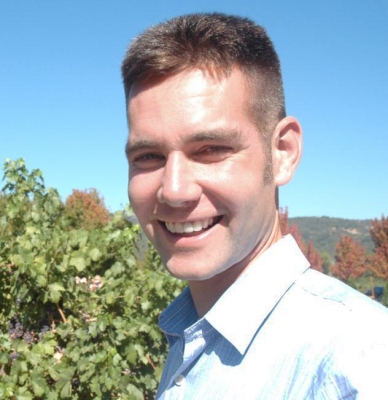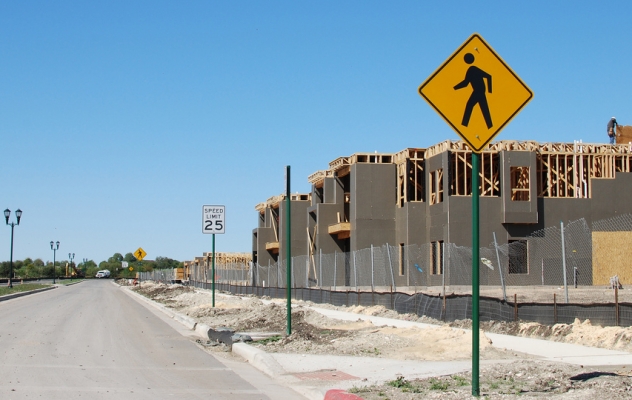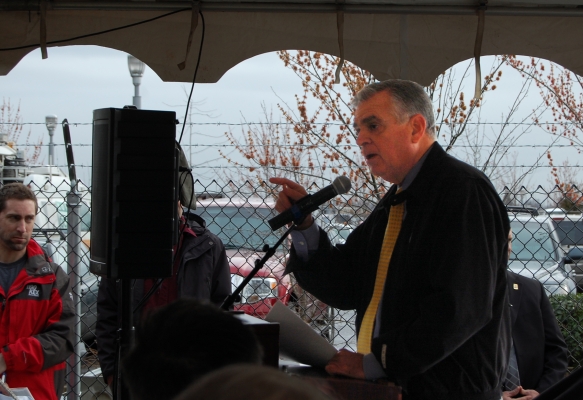In a tent in a parking lot under a freeway bridge, Ray LaHood saw the future of the country’s transportation network Tuesday. The U.S. Secretary of Transportation spoke to reporters, dignitaries and construction workers in the muddy work zone of Southwest Moody Avenue.
Last year, the project to rebuild Moody Avenue received a $23.2 million grant from the federal stimulus package. The project will double the streetcar tracks and add a cycle track and sidewalks. It will also ease connections to a new transit bridge that will carry the Portland-Milwaukie light rail line, the eastside streetcar loop, cyclists and pedestrians.
LaHood, joined by the area's congressional delegation, city and state officials, stressed the jobs the project is creating and the boost for the mix of transportation modes it represents. The project will also reduce congestion, LaHood said, by making transit attractive to current and future residents and employees.
Before construction started along Moody, automobile congestion was virtually nonexistent. However, it’s a heavily trafficked bicycle route connecting Portland’s cycle-friendly downtown bridges with its largest employer, Oregon Health and Science University.
By allowing choices of light-rail train, streetcar, bicycle and shoe leather, the project stands to boost those forms of transportation. If commuters leave their cars at home, that represents a reduction in congestion elsewhere. Of course, the project will also add...
Read more
